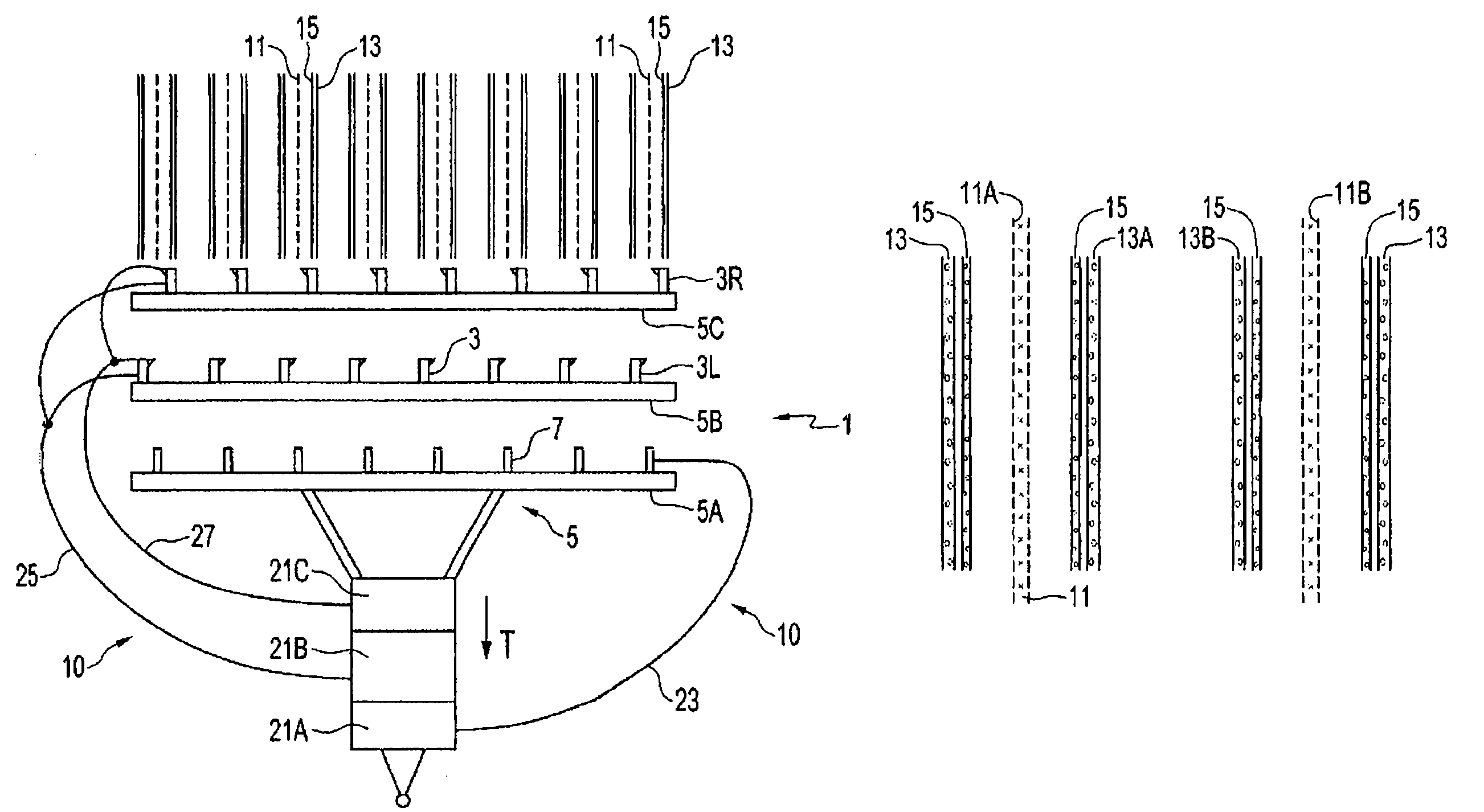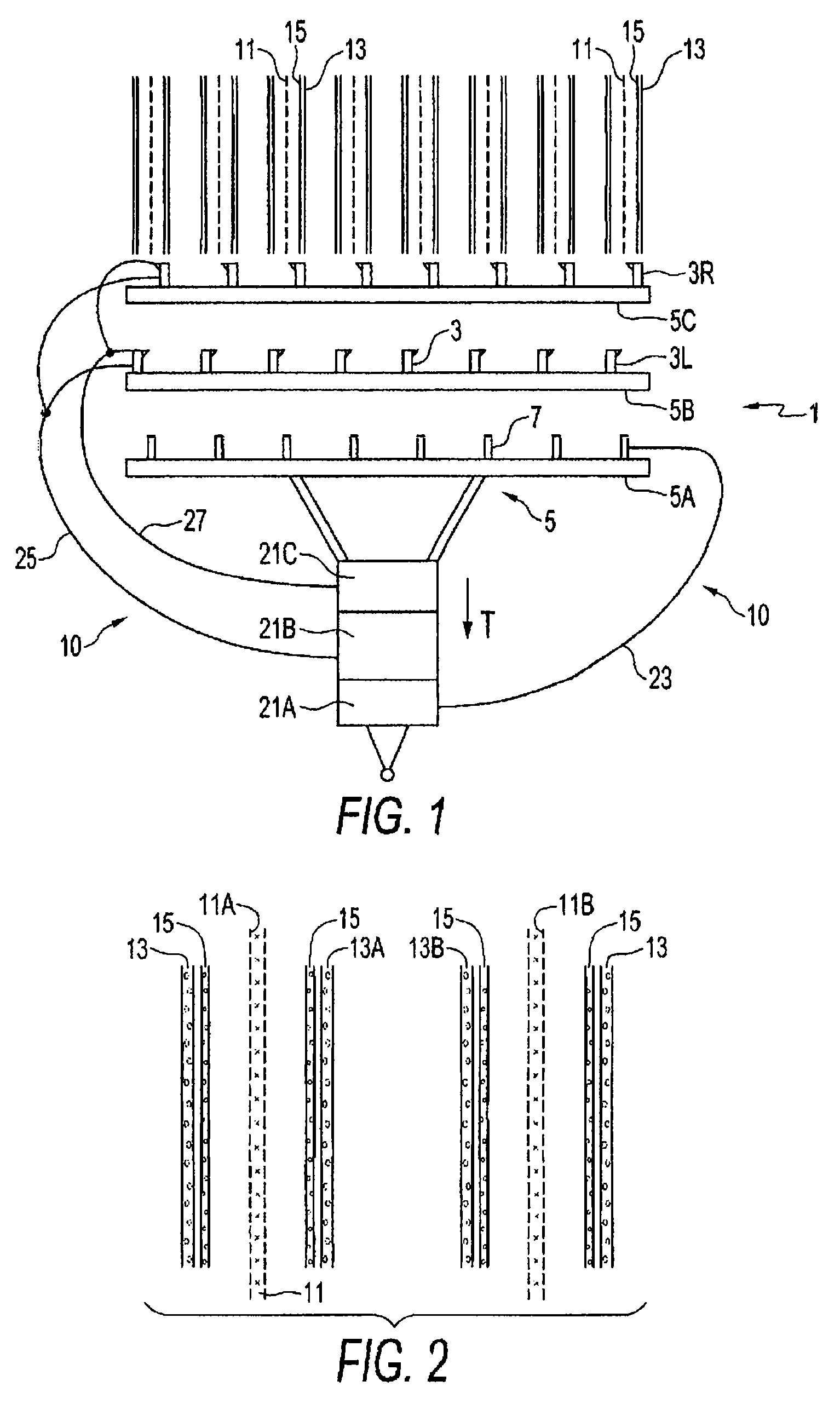Method and apparatus for seeding canola and flax
a technology of canola and flax, which is applied in the direction of seeding, fertiliser and seeding apparatus, planting, etc., can solve the problems of affecting the precision of product placement, and affecting the separation of seed and fertilizer, so as to achieve the effect of reducing efficiency and safe application rate of phospha
- Summary
- Abstract
- Description
- Claims
- Application Information
AI Technical Summary
Benefits of technology
Problems solved by technology
Method used
Image
Examples
Embodiment Construction
[0026]FIG. 1 schematically illustrates a top view of an embodiment of a seeding apparatus 1 of the invention particularly adapted for seeding flax seeds and canola seeds and moving in an operating travel direction T. The apparatus 1 comprises a plurality of side banding furrow openers 3 laterally spaced along the seeder frame 5. A plurality of mid-row banding furrow openers 7 are laterally spaced along the seeder frame 5 such that a fertilizer furrow 11 made by each mid-row banding furrow opener 7 is located substantially midway between two seed furrows 13 made by the side banding furrow openers 3.
[0027]A delivery system 10 is operative to deposit seeds through the side banding furrow openers 3 into a corresponding plurality of seed furrows 13, as further illustrated in FIG. 2. Typically the apparatus 1 will include packing elements operative to pack the seed furrows however for clarity of illustration these packing elements are not illustrated. The delivery system 10 is also operat...
PUM
 Login to View More
Login to View More Abstract
Description
Claims
Application Information
 Login to View More
Login to View More - R&D
- Intellectual Property
- Life Sciences
- Materials
- Tech Scout
- Unparalleled Data Quality
- Higher Quality Content
- 60% Fewer Hallucinations
Browse by: Latest US Patents, China's latest patents, Technical Efficacy Thesaurus, Application Domain, Technology Topic, Popular Technical Reports.
© 2025 PatSnap. All rights reserved.Legal|Privacy policy|Modern Slavery Act Transparency Statement|Sitemap|About US| Contact US: help@patsnap.com


